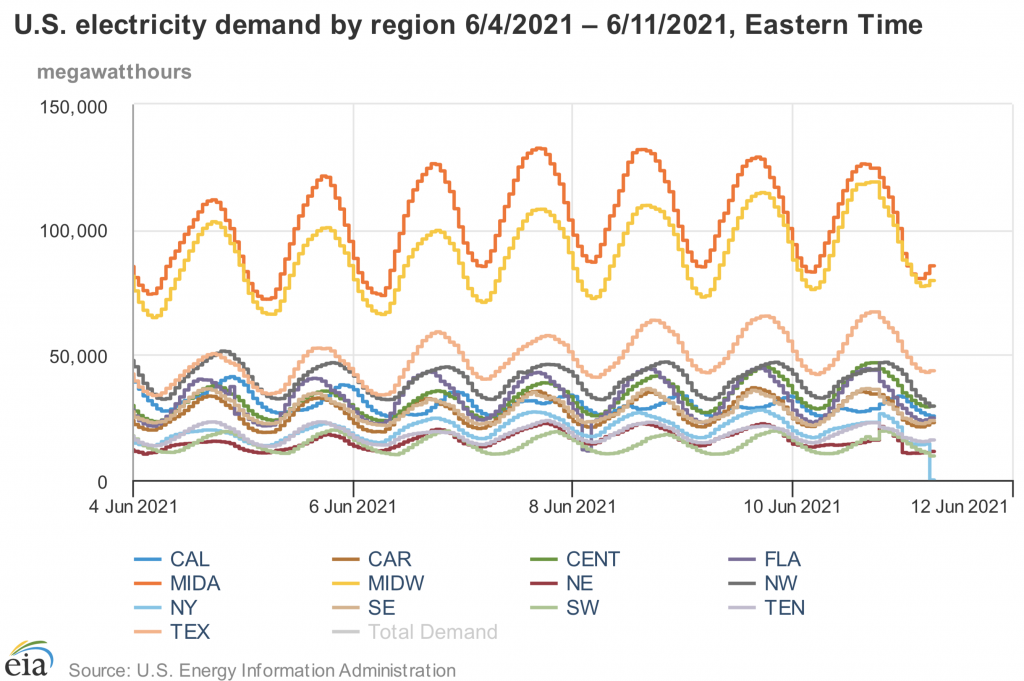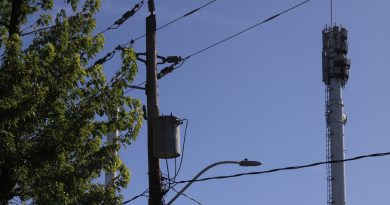Time-Of-Use Pricing Is Coming. Here’s How To Make Sure You’re Ready.
It’s summer. Summer’s hot! And we’re already hearing stories about record high temperatures in several states, not to mention serious drought. It’s only June. Lake Mead (of Hoover Dam reservoir fame) is currently posting its lowest water levels ever, which threatens both regional water supply and regional power supply. So: What does this mean for the power grid? Consumers Energy in Michigan recently announced that it would be implementing a peak demand surcharge, a.k.a. time-of-use pricing. As one of our co-conspirators suggested, this means that DTE is probably going to follow suit pretty soon. (DTE’s current time-of-use, opt-in pricing thing is utterly lame and not much of an incentive).
Time-of-use pricing means that when more people want them electrons, you gotta pay up! It’s a sensible thing based on the general idea of, well, market principles. If you’re using more power during peak demand events, you’re, in effect, getting a deal. And it’s also valuable as we talk about how to address that pesky duck graph, a.k.a. “how to make renewables work on the power grid.” It’s also vitally important to prevent the collapse of the power grid in peak demand scenarios, like what happened in Texas in February. Unfortunately, there’s a bit of an education gap. Consumers often don’t know whether their utility even has TOU pricing, as noted by Energy News. (If you thought climate change wasn’t serious, remember this post when flights have to be diverted from Phoenix because it’s too hot on the tarmac. Like, maybe next week).
This Doesn’t Happen In A Normal Climate– Or Power Grid
Power Grids: Higher Demand In Hotter Summers
To the uninitiated, power grids are, perhaps unsurprisingly, rather complicated things. All electricity that is produced is nearly instantaneously used, and loads are rebalanced by a combination of human and robot management on a continuous basis. This becomes ever more critical in times of peak demand. On an unusually warm day, for example, everyone starts turning on their air conditioners. Air conditioning is enormously energy-intensive, so this creates a lot of demand– and strain- on the grid. We call this strain “congestion.” It’s like a traffic jam on the local grid, except for electrons, not cars. As power lines become more congested, transmission losses increase, which creates a sort of vicious circle as far as power usage.
Planet Detroit recently reported on a new study out that shows that Detroit is at substantial risk for a blackout that could be Hurricane Katrina-level disastrous for the city. I mean. I guess it’s not hard to imagine in a city whose neoliberal Reaganomic mayoral administration invests more money in corporate welfare than it does in infrastructure. Or, in the service territory of a utility that earns billions, pays no federal corporate income taxes, and sits on a deteriorating power grid while still hawking fossil fuel solutions. But I digress.
Climate Change: More Extremes Require Dynamic Pricing
Recall that whole thing about climate change resulting in a one or two-degree temperature increase? That’s really an average. It’s also based on old data. Remember stats? So, basically, that two degree number is in the middle of the distribution. Oh, it’s also celsius! So, utilities need to be able to respond accordingly. There are a few strategies for this. When we say “demand response,” we are most generally referring to “what we do when we note that people want more of a thing.”
In functional terms, this can come in a few different formats. We can temporarily up the rates during peak times to try and incentivize reduced usage (informing people in advance, so as to not, you know, just screw over hundreds of thousands of ratepayers). We can also quite literally pay people not to use a certain amount of power during these times. Imagine it’s 95 degrees one afternoon and you’re stuck at home. If you have the ability to leave your house for three hours, the utility could, literally or figuratively, pay you to go sit in an air conditioned café or a movie theater, as opposed to continuing to run your AC at home. Add this up over thousands of homes, and you’ve moved the needle on grid-wide demand by a lot.
What You Can Do
Beyond basic energy saving measures in your home, make sure you stay informed about what your local utility is doing as far as time-of-use pricing. They probably offer some sort of rebates to incentivize upgrades to systems like air conditioners or appliances. When time-of-use pricing does arrive, then, you’re just incentivized to use less power during these peak times. Learn about DTE’s lackluster TOU pricing system here. Also, look into replacing window units with higher-efficiency heat pumps!





